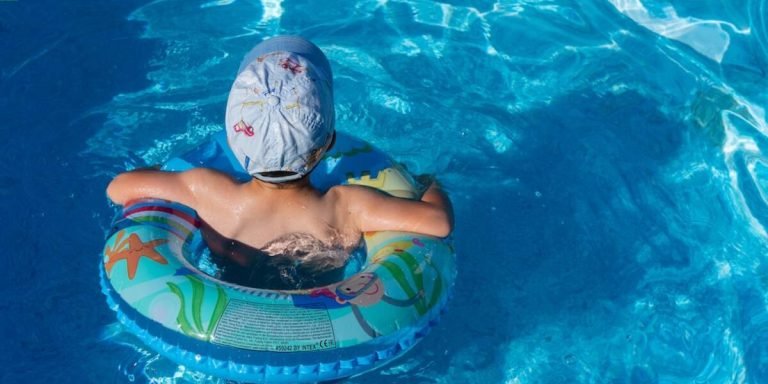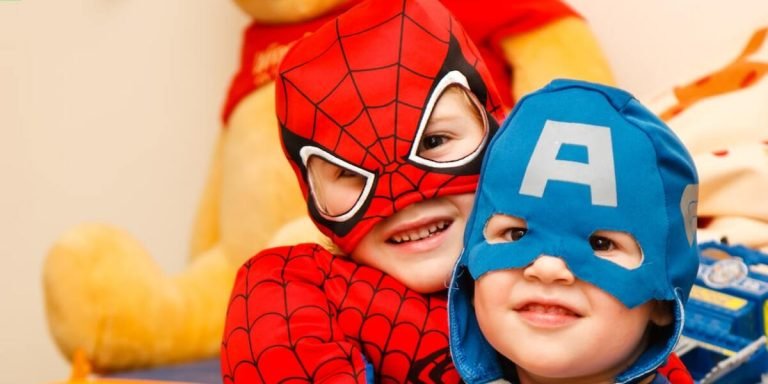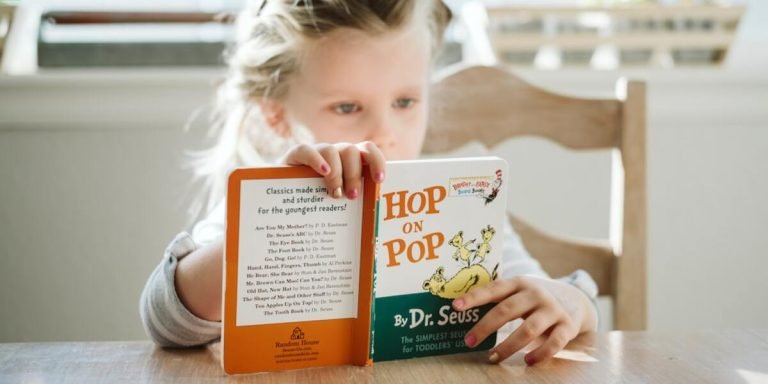Tactile Learning: A Key Methodology for Children’s Education
In the realm of early education, tactile learning remains a crucial touchstone. This hands-on approach to acquiring knowledge has been lauded by educators for its effectiveness in engaging young minds. Tactile learning or “learning-by-doing” compels children to learn through their most direct and natural connection with the world – their sense of touch.
This methodology is often linked with ‘Experiential Learning’ or ‘Activity Based Learning’. Both these terms signify an interactive way of understanding concepts that goes beyond traditional rote memorization methods used in classrooms. By actively involving kids both mentally and physically, this formative process can foster curiosity while strengthening comprehension and retention capabilities among them.
Did you know?
Did you know that around 20% of children are tactile learners, meaning they comprehend material best through touch and movement? This form of learning can boost cognitive development and improve memory.
Unlocking the Potential of Tactile Learning in Experiential Education
In the evolving landscape of 2023, children’s education upholds a symbiotic relationship with technology. However, it is still grounded on traditional and effective methods like tactile learning. Tactile learners absorb information more efficiently when they are able to touch or handle their study material.
Therefore, integrating this approach into experiential education can lead to profound impacts.
Understanding tactile learning necessitates an appreciation for our sense of touch— arguably the most undervalued among the five senses; yet integral in forming connections between experiences and ideas. Whether youngsters mold clay figures while studying geography or trace alphabets etched on textured cardboard – such tactility enhances their focus, memory retention as well as nurturing fine motor skills required for daily tasks.
Experiential education thrives by providing practical exposure through active participation rather than passive textbook knowledge absorption—an ideal platform that accommodates tactile learning effortlessly! Let’s consider gardening projects instigating biology lessons: students tend to remember the plant life cycle distinctively well when involved hands-on—a testament affirming how critical direct physical interaction is towards enriching educational experience.
The Role of Sensory Engagement in Enhancing Understanding
Tactile learning, often underexplored in traditional classroom environments, has demonstrated immense potential when it comes to experiential education. Sensory engagement stands as a crucial element determining the effectiveness of this form of learning.
Let’s take an insightful journey into understanding how sensory engagement enhances comprehension and contributes toward making tactile learning more impactful.
Firstly, recognizing that children are inherently multisensory learners is critical. Children use all their senses – touch being one among them – to explore and understand their surroundings better. Tactile experiences thus become fundamental to a child’s cognitive development process.
Secondly, tactile experiences accelerate knowledge acquisition by creating real-world connections for abstract concepts. For instance, feeling different shapes or textures can help children develop a concrete understanding about these abstract ideas at an early age.
Incorporating Material Manipulation for Deeper Cognitive Connections
In the fascinating world of education, tactile learning or hands-on experiences can work wonders in nurturing deeper cognitive connections. With our focus squarely on promoting experiential education this 2023, let’s try to understand how incorporating material manipulation into your child’s learning routine could help them explore and learn more efficiently.
We begin by acknowledging that each child is unique with varied ways of perceiving information. Material manipulation plays an integral role for children who are especially kinesthetic learners, as they tend to absorb knowledge best when they engage physically with their surroundings.
One potent way we recommend is through educational craft projects — a rich source of texture variation and creativity stimulator which allow kids to develop motor skills while also enhancing their understanding of different concepts such as colors, shapes or even geography if done cleverly like creating clay models depicting Earth’s topography.
Then there are puzzles – from simple jigsaw varieties aimed at developing identification abilities among toddlers; upscaling gradually towards advanced Rubik cubes which challenge students’ spatial intelligence and problem-solving capability. The satisfaction achieved after completing these tasks creates not just deep-seated memory imprints but also instills confidence and resilience against challenges – qualities essential for holistic development in later life stages.
Bridging Theory and Practice Through Activity-Based Learning Strategies
Through the lens of modern childhood education, it’s crucial to view learning as an interactive process rather than a one-way street. One such approach that has gained traction in recent years is tactile activity-based learning or experiential learning. It offers hands-on experience and encourages active participation from students, leading them on the path of self-discovery through practical knowledge application.
Experiential learning not just bridges theory with practice but also aids in developing critical thinking skills amongst children. In this formative phase, when they are encouraged to touch, feel and explore objects related to their coursework—they learn better by doing instead of only observing things passively. By engaging multiple senses during this process—especially involving touches like feeling textures or shapes—it enhances understanding while making lessons more enjoyable for young learners.
Activity-Based Learning Strategies produce remarkable results when applied effectively in the classroom. These strategies turn abstract concepts into concrete experiences in subjects like mathematics and science, making them less theoretical and more realistic. By systematically applying tactical methods, students gain essential cognitive tools they use beyond school, contributing to their all-around development—a focus universally endorsed across educational pedagogies today.
Designing Immersive Scenarios for Hands-On Experience
Incorporating tactile learning into the education system is fundamental to bridge theory and practice, particularly through experiential or activity-based learning. The design of immersive scenarios can enhance hands-on experiences for children, providing an environment where they grasp theoretical concepts in a practical way.
Creating real-world settings are crucial when designing these scenarios. For instance, if a lesson is on environmental conservation, create a scenario that simulates this—like seed planting or recycling activities. These hands-on tasks not only cultivate their interest but also instill responsibility towards nature from an early age.
Integrating technology into sensory-rich environments magnifies the impact of tactile learning further. Innovative tech trends like Augmented Reality (AR) allow learners to interact with things virtually. This elevates interactivity levels while reinforcing concrete understanding about abstract theories concurrently.
Moreover , make it multi-sensory by adding elements such as textured materials for touch and engaging sound effects for auditory stimulation.This deepens their awareness significantly because information gets processed via several channels thereby strengthening memory retention effectively.
Enriched roles add another dimension too; having students play different characters relevant to each scenario encourages them even more practically apply what they’ve studied theoretically . They observe cause-effect relationships directly becoming partakers rather than spectators thus making knowledge acquisition meaningful personally .
Benefits of Real-World Problem-Solving Exercises
‘Real-world problem-solving exercises offer a plethora of advantages to young learners. They form an integral part of activity-based learning strategies, emphasizing the concept that children tend not only to remember but also understand concepts better when they see them in action.
The foremost advantage is their ability to bridge the gap between theory and practice. Traditional education methodologies often fail here as students learn theories without truly understanding the practical applications or seeing real-life examples. However, with tactile learning methods like problem-solving activities, theoretical knowledge takes on concrete shapes allowing children easier comprehension.
Moreover, these exercises foster critical thinking skills among youngsters – a requisite tool for navigating life’s challenges at all ages. When faced with problems resembling those from actual life scenarios during such activities, kids are encouraged not just merely learn solutions by rote but are stimulated into figuring out solutions independently- an excellent way of honing their analytical abilities.
Furthermore, real-world problem solving allows for experiential learning which has been proven time and again to be one of the most effective ways of absorbing information while promoting creativity simultaneously! Children get more engaged in tasks where they can experience results firsthand rather than just read about them from textbooks or hear classroom lectures alone , thus enhancing retention rates drastically!
Also worth noting is how these exercises enable kids to connect academic subjects with everyday realities giving due importance both disciplines alike!
Maximizing Retention with Kinesthetic Approaches to Learning
Kinesthetic learning methods greatly enhance children’s knowledge retention. This interactive approach builds on tactile learning, which means understanding through physical interaction or action instead of just reading, listening to lectures, or watching demonstrations.
Innovative educators have evolved teaching strategies beyond traditional pedagogical approaches. Hands-on experiences encourage heightened sensory perception and correlate with increased memory retention.
Kinesthetic and experiential forms of learning focus largely on activity-based lessons where children participate actively—creating models, taking part in plays or performing experiments. Studies show how active participation dramatically improves recall ability as compared to passive information consumption like rote memorization used traditionally. The essence lies not merely in engaging their attention but ensuring they physically interact with the subject matter—a proven formula for making education both fun and effective.
Living up to its promise since 2023, this method has revolutionized childhood education by implementing an inclusive environment accommodating all learners—visual (learn through seeing), auditory (learn through hearing) and kinaesthetic(tactile learnings). Offering such varied methodology helps cater specifically to each child’s natural understanding patterns—an intuitive take on teaching where absorption becomes easy when learned via favored pathways.
It’s time we maximize our young ones’ potentials using these cutting-edge tools! Let them explore their world tactually–because sometimes touching isn’t solely meant for feeling—it could mean grasping concepts easier too!
Integrating Movement into Educational Activities for Better Recall
In the realm of childhood education, integrating movement into educational activities has proven to be an effective approach to improve memory recall. This technique is a kinesthetic or tactile learning method that’s been gaining recognition for its effectiveness in maximizing retention.
One way parents and educators can incorporate this method is through ‘Activity-Based Learning’ (ABL). ABL involves children physically engaging with materials or performing actions related to what they’re studying. For instance, if teaching about shapes, instead of just showing pictures, let kids form them using clay or other tangible objects – turning it into actual experience rather than passive listening.
Experiential learning methods like these are beneficial as they cater particularly well to those classified as “kinesthetic learners” – individuals who absorb information best when being active during their sessions. However, even non-kinesthetic students often find such approaches more enjoyable and memorable compared to conventional lectures.
Another experiential learning strategy aligning with tactile methodologies includes leveraging classroom games involving motion for better knowledge absorption. When lessons become game-like experiences where movement earns points or rewards – comprehension automatically improves amongst participants while making the process inherently fun!
Thirdly but no less impactful tactic could involve task simulations mimicking real-life scenarios pertaining subject matter on hand: such as asking kids design bridges from popsicle sticks while explaining architectural fundamentals simultaneously aiming at understanding structural integrity.
Leveraging Physical Tasks to Reinforce Academic Concepts
The tactile learning approach or kinesthetic learning is a method that has proven to be remarkably effective in maximizing retention among youngsters. The $year 2023, marked an increase of experiential and activity-based learning trends within the education industry as more educators are embracing its effectiveness.
In leveraging physical tasks to reinforce academic concepts, it’s crucial to integrate activities that correlate with children’s everyday experiences. By doing so, we allow them first-hand experience of theories introduced in their curriculum whilst enabling them gain practical knowledge on how they’re applied.
One way this can be established is through experiments and simulations where children can physically engage with materials while applying what they’ve learned theoretically. This could range from constructing bridges using sticks for engineering lessons or simulating business transactions during economics class- whatever task it may be, ensure there’s always a clear correlation between the theory taught and practice made available.
Role plays too have been shown successful in reinforcing classroom teachings; these give kids room for creativity all while ensuring core elements of the lesson being studied are retained long term.
Outdoor games which incorporate questions relating directly back into subjects also greatly aids memory recall – creating both fun-filled periods, aiding learners mentally link pleasurable experiences with study time hence cementing information further into their young minds much effectively than traditional rote-learning methods ever would.
Conclusion
Tapping into a child’s sense of touch is more than just an engaging way to learn; it lays a solid foundation for their educational journey. Tactile learning infuses joy in the process and fosters an environment for robust mental development, making even complex concepts simpler and enjoyable. As parents or educators, your role in enhancing this fun-filled experiential learning cannot be overstated.
Explore our site further with its wealth of knowledge on children’s education techniques including tactile learning. From insightful articles designed specifically for adults navigating the fascinating world of childhood education to resources offering support as you mould young minds – we’ve got it all covered! Now that you’re armed with key insights about tactile learning efficacy don’t stop here; dive deeper into discovering amazing ways to make educating youngsters not only effective but also delightfully captivating!







